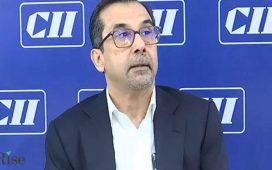Unlock the Editor’s Digest for free
Roula Khalaf, Editor of the FT, selects her favourite stories in this weekly newsletter.
The downturn in Britain’s once-booming bike market is deepening, according to one of the country’s biggest specialist retailers, in a sign that consumers remain under pressure even as inflation has eased.
Halfords, Britain’s biggest cycling retailer, said on Thursday that a pandemic-era jump in cycling had given way to a slump in demand, as customers under financial pressure put off making “big ticket, discretionary purchases”.
After soaring in popularity during lockdowns, cycling has become a victim of the cost of living crisis, with customers avoiding buying new bikes and accessories even as inflation and borrowing costs eased this year.
According to industry body the Bicycle Association, bike volumes are down by 30 per cent compared with before the pandemic, worse than expected and taking the total size of the market to £1.1bn.
“If you’re running, you need to buy some trainers. If you’re riding you need to buy a bike, and that’s hundreds and hundreds and hundreds of pounds,” said Halfords chief executive Graham Stapleton. “Customers are just deferring that type of spend because things are tight.”
Despite the rate of inflation falling to 2 per cent in May from a 41-year high of 11.1 per cent in October 2022, the struggles of the bike industry show that the UK consumer is still under pressure. On Thursday, Halfords said more people were buying bikes on credit, with many holding off altogether.
Reporting preliminary results on Thursday, Halfords, which has 385 shops and 639 garages across the UK, said its cycling revenues dropped almost 3 per cent on a like-for-like basis in the year to the end of March, contributing to an almost 8 per cent drop in underlying pre-tax profits.
The retailer surged during the Covid-19 pandemic as cycling sales rose, but has suffered since, issuing a profit warning in February. Shares are down 34 per cent over the past 12 months.
On Thursday, Halfords said the cycling market had consolidated “at a faster rate than expected”, and predicted a further decline in demand this year.
“The cycle market was in decline last year, it’s still in decline this financial year. And therefore it is sensible to forecast that will (also) happen this year,” said Stapleton.
“This is purely cost of living related,” he said, adding that if interest rates came down and inflation started to stabilise, “you will see a better position next year and the year after”.
Tandem, a Birmingham-based cycling company, on Wednesday reported a similarly gloomy picture, warning that the selling season for bikes was delayed “due to poor weather conditions and high levels of excess stock in the market”.
Jonathan Pritchard, an analyst with Peel Hunt, said from a customer’s point of view, buying a bike was an easy decision to postpone.
“If in April I’ve cycled perfectly well on my old bike, I would be thinking I should probably use the same bike for this season. Maybe I’ll rather buy one next year,” he said, adding that poor weather at the start of the year had also hampered sales.
Halfords, a 131-year-old company said it remained “confident” in its strategy, partly because it had made good progress in evolving into a service-led business. In 2023, 80 per cent of the company’s revenue came from motoring services and garages.








